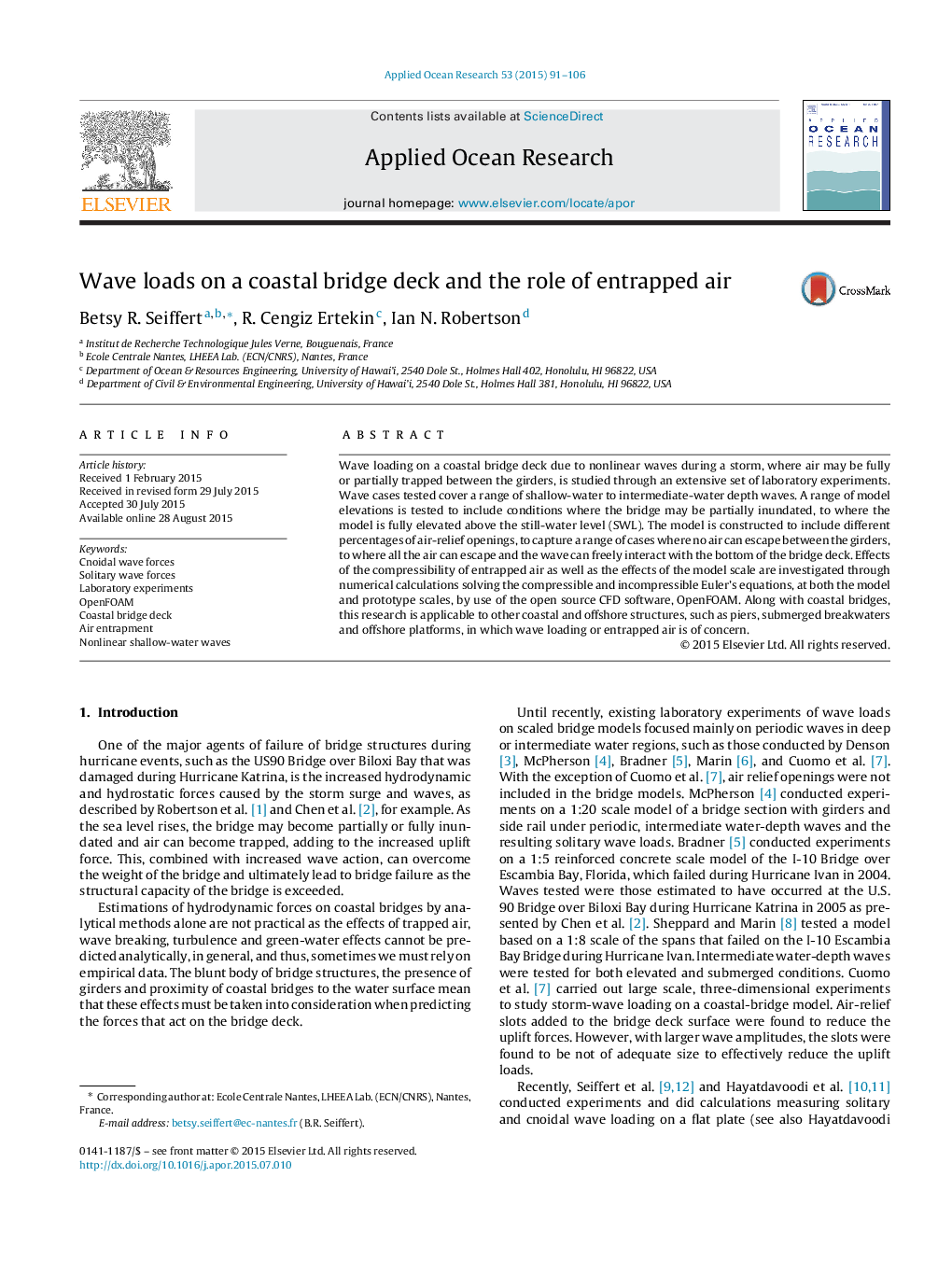| Article ID | Journal | Published Year | Pages | File Type |
|---|---|---|---|---|
| 1719903 | Applied Ocean Research | 2015 | 16 Pages |
•Laboratory experiments measure nonlinear wave impact force on a bridge model.•Air may be fully or partially trapped between the bridge model girders.•There is significant reduction in uplift forces with adequate air relief openings.•A reduction coefficient is calculated and compared with the Bagnold–Mitsuyasu model.•The effect of air compressibility when air is fully entrapped is studied numerically.•Calculations suggest Froude scaling can be applied to experimental measurements.
Wave loading on a coastal bridge deck due to nonlinear waves during a storm, where air may be fully or partially trapped between the girders, is studied through an extensive set of laboratory experiments. Wave cases tested cover a range of shallow-water to intermediate-water depth waves. A range of model elevations is tested to include conditions where the bridge may be partially inundated, to where the model is fully elevated above the still-water level (SWL). The model is constructed to include different percentages of air-relief openings, to capture a range of cases where no air can escape between the girders, to where all the air can escape and the wave can freely interact with the bottom of the bridge deck. Effects of the compressibility of entrapped air as well as the effects of the model scale are investigated through numerical calculations solving the compressible and incompressible Euler's equations, at both the model and prototype scales, by use of the open source CFD software, OpenFOAM. Along with coastal bridges, this research is applicable to other coastal and offshore structures, such as piers, submerged breakwaters and offshore platforms, in which wave loading or entrapped air is of concern.
